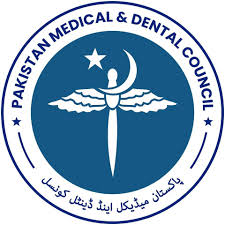Ameliorative effects of Spinacia oleracea on sperm morphology, count, and motility by normalizing the obesity-induced oxidative stress in Sprague Dawley rats
DOI:
https://doi.org/10.37018/jspf4712Keywords:
Antioxidant, Male infertility, Obesity, Sperm, SpinachAbstract
Background: Obesity is a prevailing metabolic disorder that affects the functioning of the male reproductive system. Excessive adipose tissue enhances reactive oxygen species generation and is linked with male infertility. Spinach has demonstrated antioxidant effects. The present study was conducted to determine the antioxidant effects of spinach on sperm parameters in obese Sprague Dawley rats.
Subjects and methods: This randomized control study was conducted at the animal house of the National Institute of Health Islamabad, Islamic International Medical College, Cosmesurge International Hospital, Rawalpindi, and Apollo lab, Islamabad, Pakistan from April 2016 to March 2017. Forty male Sprague Dawley rats having an age of 8 weeks and weight 160-200g were tagged from number 1 to 40. Every third rat was randomly allocated to control Group A (n=13) and remaining into the Experimental group (n=27). Rats of control Group A was given a standard diet while a high-fat diet was given to Experimental group rats to induce obesity for the duration of six weeks. Weight (g) was measured weekly and obesity was confirmed when rats attain more than 20% weight when compared with that of rats of control Group A. Then, after obesity induction, the experimental group was alienated into the obesity control group (Group B) and spinach treated group (Group C). For sample, rats of Group A and Group B were sacrificed, and the cauda epididymis of each rat was placed in a Petri dish containing normal saline and cut into pieces to allow the release of sperm and then sperm parameters (sperms concentration, motility, and morphology) were recorded under the microscope. Then, spinach (5% hot water extract) along with the persistence of fat diet was administered to Group C for 4 weeks and finally, sperm parameters were measured in this group.
Results: Sperm concentration/ml, motility (%), and normal morphology (%) of Group B rats were significantly decreased as compared to Group A rats. However, sperm concentration/ml, motility (%), and normal morphology (%) of Group C (spinach treated group) rats was significantly increased (p<0.001) as compared to Group B (obesity control group) rats after administering spinach.
Conclusion: The addition of Spinach in a normal diet regimen restores normal sperm morphology, improves sperm motility and concentration.
Downloads
Published
How to Cite
Issue
Section
License
The Journal of Fatima Jinnah Medical University follows the Attribution Creative Commons-Non commercial (CC BY-NC) license which allows the users to copy and redistribute the material in any medium or format, remix, transform and build upon the material. The users must give credit to the source and indicate, provide a link to the license, and indicate if changes were made. However, the CC By-NC license restricts the use of material for commercial purposes. For further details about the license please check the Creative Commons website. The editorial board of JFJMU strives hard for the authenticity and accuracy of the material published in the journal. However, findings and statements are views of the authors and do not necessarily represent views of the Editorial Board.

















